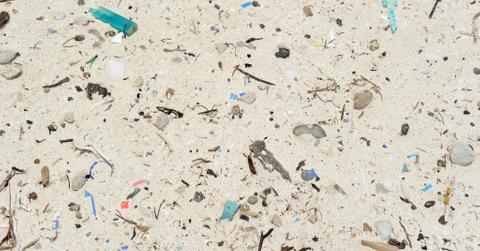Timeless Toxins: Microplastics Detected in Ancient Archaeological Sites Dating Back Thousands of Years

Microplastics cover a beach in Mexico.
Plastic was not around in the 100s A.D. So how are archaeologists finding it in ruins now?
Reports show that ancient work in Britain may be mixed with modern materials.
A new study from England says researchers uncovered “the first evidence of MP [microplastics] contamination in archaeological sediment (or soil) samples…”
The report in a recent edition of the journal Science of the Total Environment notes MPs have been found in soil samples on five continents. They’ve commonly been collected from archeological sites since the 1970s.
“Contamination is occurring almost imperceptibly, and has been occurring over many years,” the report says.
A statement to CNN by a team from the University of York says MPs were in samples more than 23 feet deep that dated from between 1-200 A.D. The samples were dug up during the 1980s.
“What were previously thought to be pristine archaeological deposits, ripe for investigation, are in fact contaminated with plastics,” university professor John Schofield said recently.
What Schofield calls a case of “historic heritage incorporating toxic elements” could be bad for research. But he admits the impact needs more study.
- What Lies Beneath: NASA Scientist Believes Aliens May Have Found 'Perfect' Hiding Spot in Earth's Oceans
- Global Threat: Russia Insider Warns West of 'World War Using Nuclear Weapons' Amid Escalating Support for Ukraine
- Countdown to Disaster? Ex-NATO Official Warns Russia, Iran and China Could Wage WWIII in Just Years
“MPs may compromise the scientific value of archaeological deposits and environmental proxies suspended within significant sediment,” the study said. “Porous biological remains such as plant, animal and insect remains are likely at greater risk.”
The researchers note the rise of “developer-funded commercial archaeology” and plastic use around the world both happened around the same time, in the mid-1980s.
But it speculates there could be other sources for the MPs at exploration sites. They include “environmental change, environmental pollution, human behavioral change… and infrastructure,” perhaps through leaking sewage and water pipes.
“Archaeology still tends to consider soil as the ‘stuff’ in which artifacts and ecofacts are contained,” the study says.
“The presence of microplastics can and will change the chemistry of the soil,” David Jennings of York Archaeology added in a statement.
Never miss a story — sign up for the Front Page Detectives newsletter. Be on the scene the moment news breaks.
Microplastics generally are defined as pieces no larger than five millimeters or 0.2 inches. That’s roughly the size of a sesame seed.
They’re creeping into human lives in many ways. A recent study by the University of New Mexico found MPs even can be in placentas in female wombs.
“The more data we get, the more sobering this is,” Dr. Matthew Campen told KOB-TV. “Every single placenta we looked at had some amount of plastics in it.”
But Campen advised against panicking about it. He said MPs cannot be avoided, but governments should take more action about the concern.
Become a Front Page Detective
Sign up to receive breaking
Front Page Detectives
news and exclusive investigations.
